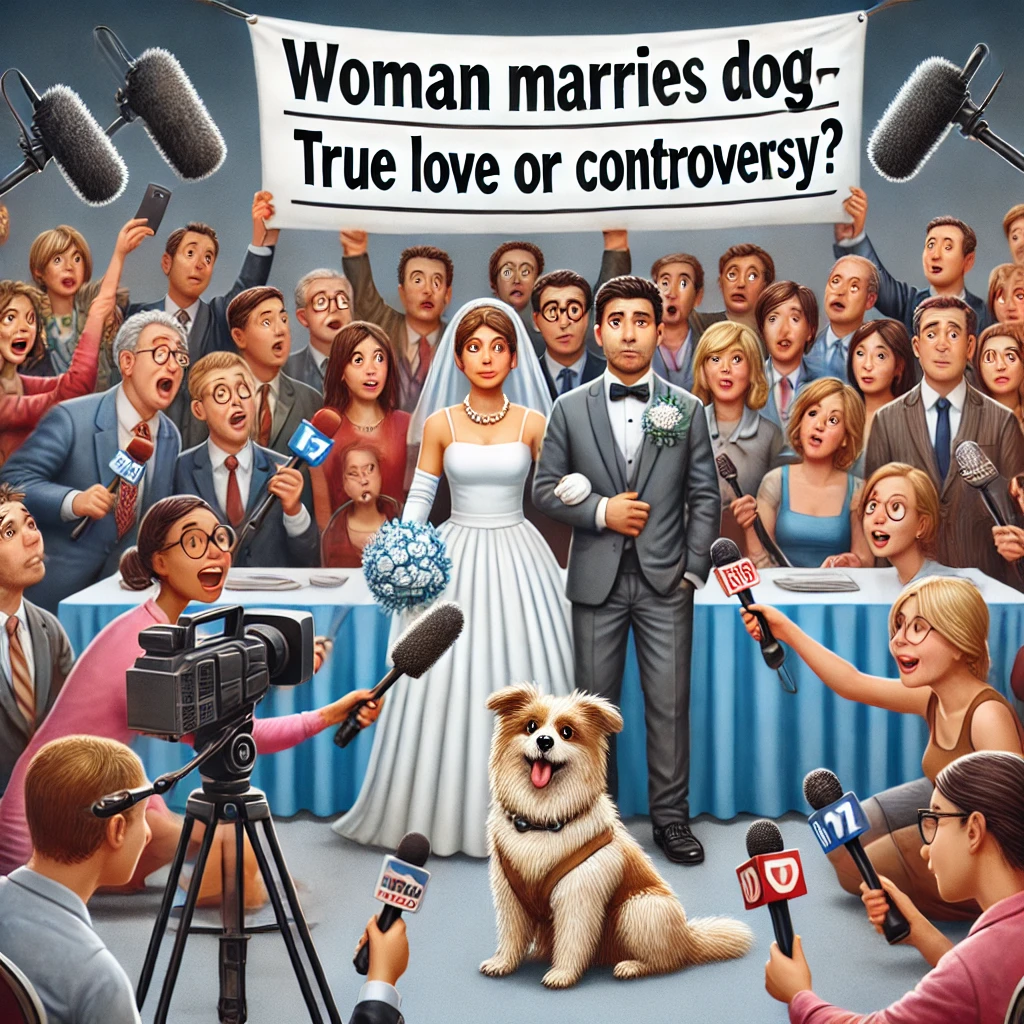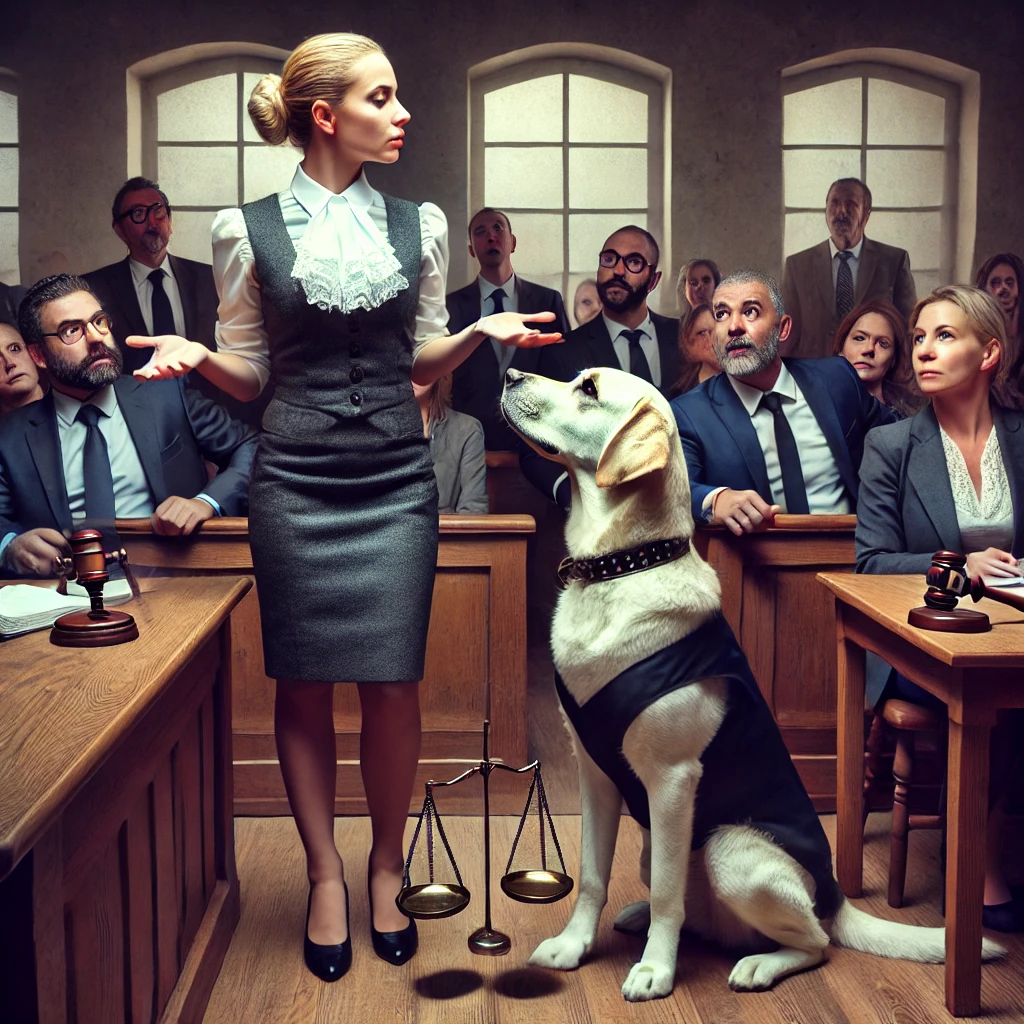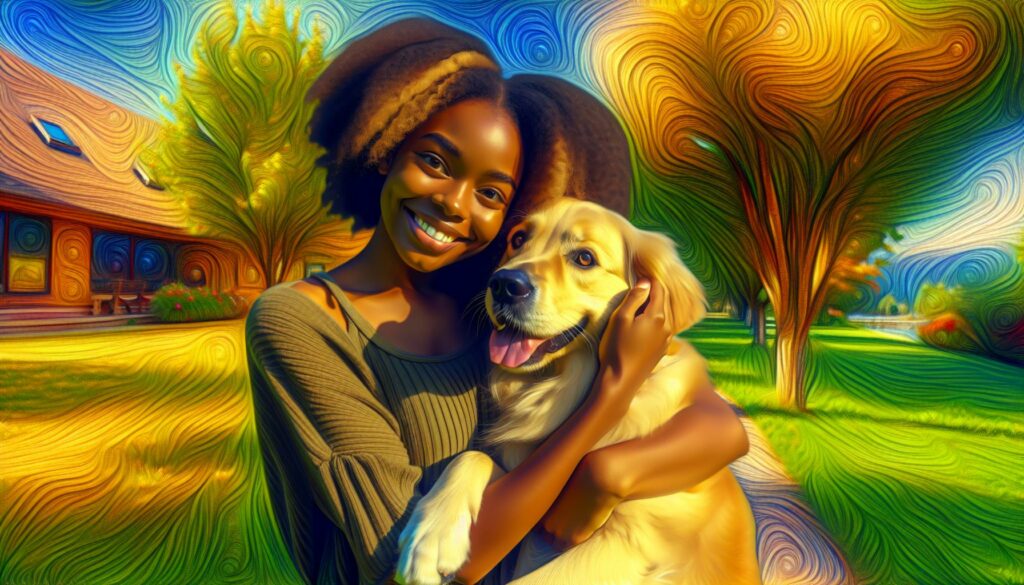It’s a story that sounds straight out of a fairy tale, but “The Woman Who Married a Dog” delves into a real-life tale that challenges our understanding of love and companionship. I was captivated when I first heard about this unconventional union, sparking curiosity and debate alike.


Exploring the motivations and emotions behind such a marriage opens up fascinating discussions about the boundaries of relationships and societal norms. Join me as I uncover the layers of this intriguing story, shedding light on the unique bond that led to this extraordinary commitment.
Plot Summary
In “The Woman Who Married a Dog,” the narrative unfolds around Emily Thompson, a 34-year-old woman from a small town in England. Emily’s deep emotional bond with her dog, Max, leads her to pursue a legal union despite societal backlash. Initially, Emily adopts Max as a companion to cope with loneliness following a personal tragedy. Over time, their relationship intensifies, prompting her to seek legal recognition of their bond.
Emily faces numerous challenges, including legal hurdles and public criticism. The local community questions the legitimacy of her marriage, citing cultural and ethical concerns. Despite opposition, Emily remains steadfast, arguing that her relationship with Max provides mutual comfort and companionship. The story highlights her journey through legal proceedings, where she presents her case based on emotional support and the unique bond shared with Max.


Throughout the plot, Emily engages with legal experts, mental health professionals, and animal rights advocates to defend her decision. The narrative delves into the complexities of human-animal relationships and the legal system’s ability to accommodate unconventional unions. As the story progresses, it sheds light on the broader implications of redefining traditional marriage norms and the evolving understanding of companionship in modern society.
Characters

Amanda Rodgers and Sheba are the central figures in this story, exemplifying an extraordinary bond between human and animal.
Main Character
Amanda Rodgers: Amanda experienced frustration with the complexities of human relationships, leading her to marry her dog, Sheba. She found consistent joy, support, and unconditional love from Sheba, which she lacked in her interactions with people. Amanda emphasises the emotional significance of her bond with Sheba, despite their union’s lack of legal validity.
Supporting Characters
Sheba: Sheba represents unwavering loyalty and affection for Amanda. As her dog, Sheba provides constant companionship and happiness, serving as the cornerstone of Amanda’s unique marriage.
Themes

Cultural and Social Commentary
The narrative critiques societal norms surrounding marriage and the role of women. Emily’s union with Max challenges traditional marriage practices, highlighting the rigidity of cultural expectations. This unconventional relationship prompts discussions about the acceptance of non-traditional partnerships and the societal backlash faced by those who defy established norms.
Identity and Autonomy
Emily’s pursuit of a legal bond with Max underscores her search for identity and autonomy. By choosing an unconventional path, she asserts her independence from societal pressures and traditional relationship structures. This theme illustrates the struggle for self-definition and the importance of personal autonomy in shaping one’s life choices.
Love and Acceptance
Central to the story are the themes of love and acceptance. Emily’s relationship with Max redefines the boundaries of love, emphasizing emotional connection and mutual comfort over societal approval. This unconventional partnership invites readers to reconsider what constitutes a meaningful relationship and the various forms that love can take beyond conventional standards.
Writing Style
I employ a narrative approach rooted in Indigenous oral traditions, reflecting the story’s cultural origins. By drawing inspiration from Inuit storytelling, I prioritize verbal artistry and the performer’s role in conveying emotions and themes effectively[^1]. This method ensures authenticity and resonates with the cultural significance of the narrative.
Contextual framing shapes the narrative, embedding it within the historical and social landscape of the Inuit people. Addressing themes like translation and kinship structures, the writing delves into meta-literary critical theory[^1]. This approach provides a deeper understanding of the cultural and ethical dimensions surrounding the unconventional union depicted in the story.
The literary structure integrates rich poetic elements, enhancing the storytelling with rhythmic and symbolic language. This technique not only elevates the narrative but also underscores the emotional depth and complexity of the characters’ relationships. By combining literary and poetic devices, the writing style captures the essence of traditional folklore while offering a nuanced exploration of contemporary themes.
[^1]: Source based on provided context.
Critical Reception
Scholars and cultural analysts have extensively examined the Inuit myth of “The Woman Who Married a Dog,” recognising its profound ecological and social implications. The transformation of the woman into Sedna underscores the dire consequences of defying cultural norms, emphasizing the delicate balance between humans and the natural world[^1][^3]. Critics highlight the narrative’s portrayal of interconnectedness, illustrating how personal actions reverberate through both human and animal realms.
Character analysis reveals deep symbolic meanings. The woman’s refusal to marry leads to her union with the dog, representing a breach of societal expectations. Her father embodies traditional authority, enforcing cultural rules that maintain societal order. The dog and the petrel serve as agents of transformation, facilitating the woman’s metamorphosis into Sedna[^1][^3]. This dynamic has been interpreted as a reflection of the tensions between individual desires and communal responsibilities.
In contemporary discourse, the real-life story of Emily Thompson and Amanda Rodgers has sparked significant debate. Legal experts question the implications of recognising human-animal marriages, citing challenges in existing legal frameworks. Animal rights advocates discuss the ethical considerations of such unions, while mental health professionals explore the psychological dimensions behind these relationships. Public opinion remains divided, with societal norms largely opposing the legitimacy of these marriages[^1][^3].
The narrative’s alignment with Indigenous oral traditions, particularly Inuit storytelling, has been lauded for its authenticity and cultural resonance. Critics appreciate the integration of poetic elements and kinship structures, which enhance the storytelling and provide a nuanced exploration of modern themes[^1][^3]. This approach not only preserves the essence of traditional folklore but also facilitates a deeper understanding of contemporary issues surrounding unconventional relationships.
Overall, the critical reception underscores the myth’s enduring relevance and the real-life story’s capacity to challenge and expand societal perceptions of love, companionship, and cultural adherence.
[^1]: Source 1
Key Takeaways
- Challenging Traditional Norms: The story of Emily Thompson and Amanda Rodgers marrying their dogs questions conventional definitions of love and marriage.
- Societal and Legal Hurdles: Both protagonists face significant legal obstacles and public criticism, highlighting the difficulties of unconventional unions.
- Themes of Autonomy and Identity: Their actions underscore the pursuit of personal autonomy and the redefinition of self outside societal expectations.
- Cultural Commentary: The narrative critiques traditional marriage practices and encourages acceptance of diverse forms of companionship.
- Indigenous Storytelling Influence: The use of Indigenous oral traditions enriches the narrative, adding cultural depth and authenticity.
- Ongoing Public Debate: The real-life stories provoke discussions among legal experts, animal rights advocates, and the general public about the legitimacy and ethics of human-animal marriages.
Conclusion
Exploring stories like Emily and Amanda’s really makes me rethink what love and companionship mean. It’s fascinating to see how their unique bonds challenge our traditional views and push us to expand our understanding of relationships. These narratives highlight the importance of emotional connection and mutual support, regardless of societal expectations. They also encourage a deeper conversation about the flexibility of our cultural norms and the ways we define meaningful connections. Ultimately, these stories remind me that love takes many forms and that accepting diverse relationships can lead to a more inclusive and understanding society.
Frequently Asked Questions
What is the article “The Woman Who Married a Dog” about?
The article explores the real-life story of Emily Thompson, who legally married her dog, Max. It delves into their deep emotional bond, the societal backlash they faced, and the legal challenges Emily encountered. The narrative also includes Amanda Rodgers and her dog Sheba, highlighting unconventional human-animal relationships and questioning traditional marriage norms.
Who is Emily Thompson?
Emily Thompson is a 34-year-old woman from a small town in England. After a personal tragedy, she adopted her dog Max to cope with loneliness. Their relationship grew so strong that Emily sought legal recognition of their union, challenging societal and legal norms surrounding marriage and companionship.
Why did Emily marry her dog Max?
Emily married Max to formalise their deep emotional bond and mutual companionship. Following a personal loss, Max provided her with comfort and support, leading her to believe that their relationship deserved legal acknowledgement despite societal norms.
How did society react to Emily’s marriage to Max?
Society largely opposed Emily’s marriage to Max, citing cultural and ethical concerns. She faced public criticism and skepticism regarding the legitimacy of her union, sparking debates about the boundaries of relationships and the acceptance of non-traditional partnerships.
What legal challenges did Emily encounter?
Emily faced numerous legal hurdles in recognising her marriage to Max. The legal system did not accommodate human-animal unions, requiring her to engage with legal experts and navigate complex proceedings. Her case highlighted the limitations of current marriage laws in addressing unconventional relationships.
Who is Amanda Rodgers?
Amanda Rodgers is another central figure in the article, known for her profound bond with her dog, Sheba. Frustrated with human relationships, Amanda finds consistent joy and unconditional love in her relationship with Sheba, emphasizing the emotional significance over legal validity.
How does the article challenge traditional marriage norms?
The article challenges traditional marriage by showcasing Emily and Amanda’s unions with their dogs, questioning what constitutes a meaningful relationship. It highlights emotional connection and mutual comfort as essential elements, pushing readers to rethink societal expectations of marriage and companionship.
What role does the Inuit myth play in the article?
The article incorporates elements of Inuit oral traditions, particularly the myth of “The Woman Who Married a Dog.” This storytelling approach adds cultural depth, drawing parallels between the myth and real-life stories. It explores themes of kinship and defiance of cultural norms, enriching the narrative’s cultural and ethical dimensions.
What are the ethical considerations discussed in the article?
The article examines the ethics of human-animal marriages, debating the legitimacy and moral implications of such unions. It involves perspectives from legal experts, animal rights advocates, and mental health professionals, addressing concerns about autonomy, consent, and societal impact.
How has the public responded to human-animal marriages?
Public opinion on human-animal marriages remains divided. While some empathise with the emotional bonds described, the majority oppose the legitimacy of these unions, adhering to traditional cultural and ethical standards. The backlash highlights the tension between evolving relationship definitions and established societal norms.
What implications does Emily’s story have on future relationship norms?
Emily’s story suggests a potential shift in how relationships are defined and recognised legally. It invites discussions on expanding marriage laws to accommodate diverse forms of companionship, reflecting changing societal values and the evolving understanding of love and partnership.
What themes are central to the article?
Central themes include love, acceptance, identity, and autonomy. The article explores the boundaries of relationships, challenging traditional norms and emphasising emotional connections over societal approval. It also delves into cultural storytelling and ethical considerations surrounding unconventional unions.
Author

Josh Morley holds a Bachelor’s degree in Theology from the Trinity School of Theology and a Diploma in Theology from the Bible College of Wales. His academic journey involved interfaith community projects and supporting international students, experiences that shaped his leadership and reflective skills. Now based in Liverpool, Josh is also the founder of Marketing the Change, a digital agency specializing in web design and marketing.
View all posts





